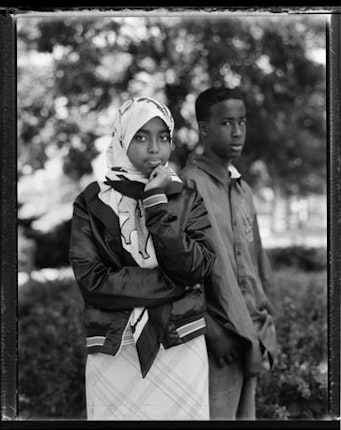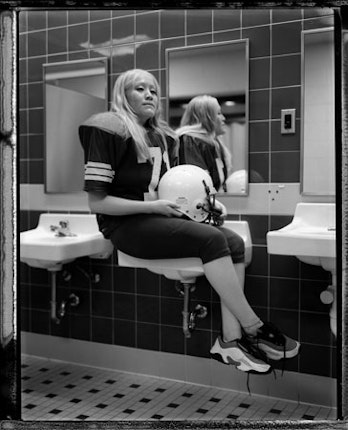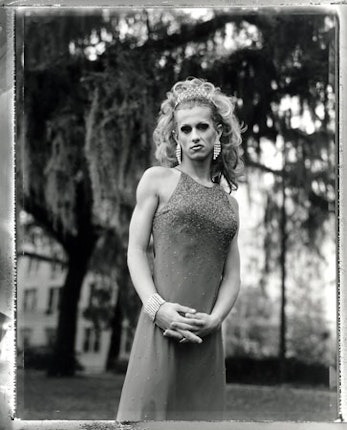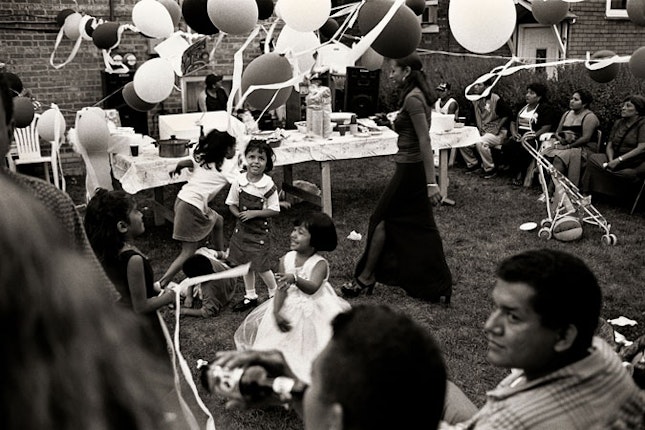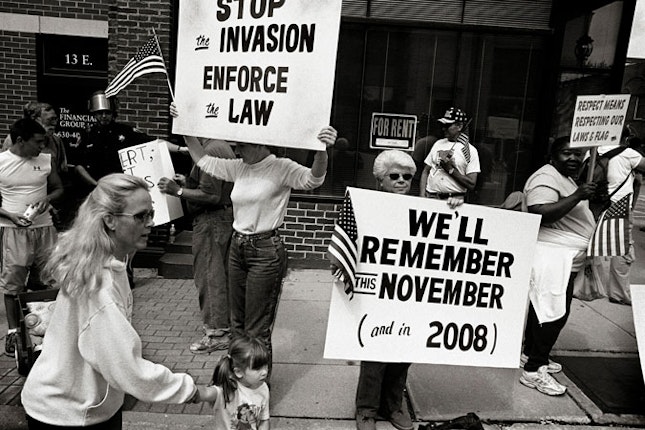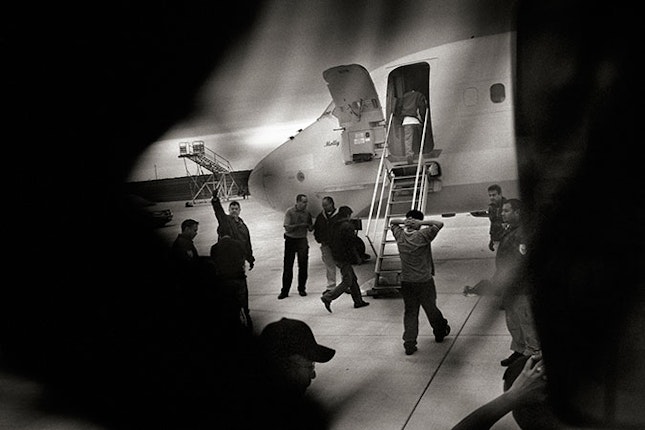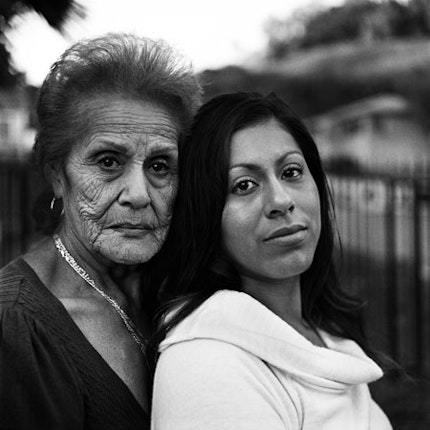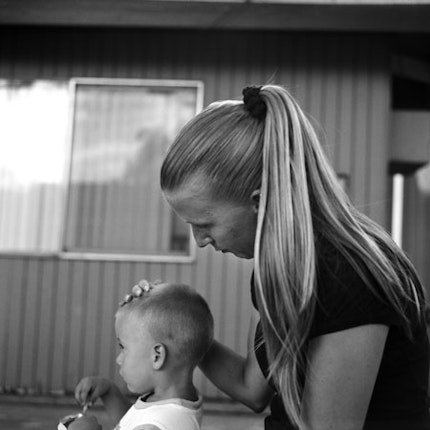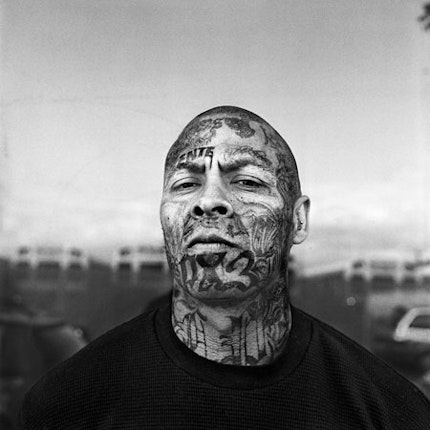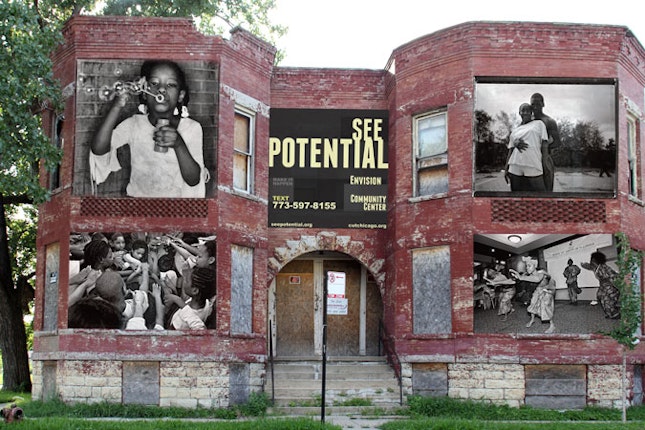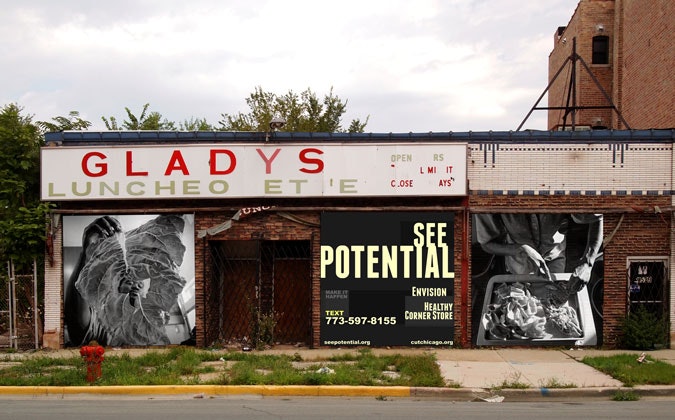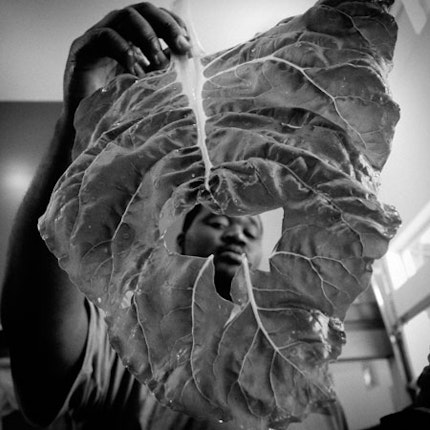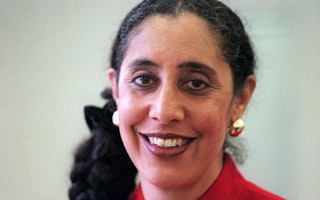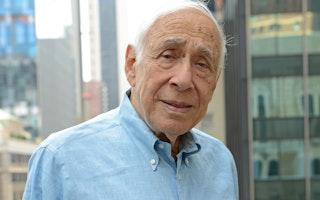Images and Advocacy: Announcing Our 2012 Audience Engagement Grant Winners
By Yukiko Yamagata
Since 2004, the Open Society Documentary Photography Project has offered the Audience Engagement Grant to encourage photographers to explore how images can advance social change. We created the program to challenge the traditional relationship between photography and its audience, where images are presented on a wall or on the printed page, and viewers consume the work in a passive manner. The fundamental question we ask of our grantees is how to translate the experience of viewing a compelling body of work into social action.
The Audience Engagement Grant supports projects that move people beyond the act of looking and provide ways for audiences to take a more direct role in making change happen. Some projects adopt a collaborative approach to the image-making process and actively involve viewers in deciding how images that represent their community are created, distributed, and utilized. We see these projects as a form of community organizing, where change happens from the ground up. Other projects and photographers have targeted high-level decision makers and take the images to the places where those in power are likely to see the photos. Whether pressuring governments or corporations, these projects are intended to compel decision-makers to positively act on the problems documented in the photographs.
We find that the most successful projects are not only built around a strong body of images, but also include collaborative partnerships between photographers and organizations with a history of confronting the issues being addressed. In evaluating the proposals, the committee looks for compelling and inspiring images and ideas, combined with a well-developed theory of change for how the target audience can play a role in advancing social justice and human rights.
With this in mind, the selection committee convened in October and chose the following projects for the 2012 Audience Engagement Grant competition. For the first time in the history of the grant, all selected projects are located in the United States, with three taking place in California. While we do aim to support a geographically diverse cohort of grantees each year, we place primary importance on the strength of the images and project ideas. We have selected the projects that we feel best embody the spirit of the grant and look forward to exploring potential synergies among the projects, and the overlapping issues that they address in the United States.
“The American Teenager Project” (Richmond, California)
Robin Bowman, in partnership with The American Teenager Project
To create an exhibition, curriculum, and training program to stimulate youth engagement on civil and human rights issues. Bowman will work with local arts organizations, high schools, and advocacy groups in Richmond, California—such as Community Leaders Organizing Undocumented Dreamers (CLOUD). She will offer storytelling workshops, train youth and teachers as ambassadors for the program in their schools, and connect youth to peers who are advocating and organizing around the issues affecting their communities. The program will be built around the stories of young people featured in Bowman’s “It's Complicated: The American Teenager Project” portrait and interview series.
“Escondido en Escondido” (Escondido, California)
Jon Lowenstein, in partnership with Trans-Border Institute
Lowenstein will provide local faith leaders and religious youth groups in Escondido, California, with tools to mediate escalating tensions between new migrant and native-born communities. Through conflict analysis, transformation training, and photography, religious leaders and local youth will be trained to document and address immigration issues and promote community integration. The resulting images will be combined with Lowenstein’s “Shadow Lives USA” and distributed in Escondido as a newsprint handout. By downloading an augmented reality browser called Junaio, readers will be able to access additional content by waving their smart phone cameras over specially marked pages.
“Re-entry Stories” (Richmond and San Jose, California)
Joseph Rodriguez, in partnership with New America Media
Rodriguez will train journalism students and youth reporters to sensitively and accurately document the stories of people re-entering society after incarceration. Rodriguez will train and mentor students from Santa Clara University and the University of California, Berkeley, as well as reporters from New America Media’s youth media hubs to create multi-media stories on reentry. Their work will be featured alongside Rodriguez’s “Re-entry in Los Angeles” and shown at forums to strengthen advocacy for criminal justice reforms in California.
“See Potential” (Chicago, Illinois)
Emily Schiffer, in partnership with the Center for Urban Transformation and Magnum Foundation
The See Potential team will work with residents of Chicago’s South Side to transform neglected buildings and vacant lots into sustainable, locally-owned community developments. Using documentary photographs captured in South Side neighborhoods, often by local photographers, See Potential will create photographic banners promoting four urban revitalization projects in the Englewood and Bronzeville neighborhoods. The banners will be installed at the sites and residents will be able to show their support for the proposed projects via text message and participate in the process to revitalize the sites.
Congratulations to the 2012 grantees, and thanks to our selection committee: Claudine Brown (former Director of the Arts and Culture Program, Nathan Cummings Foundation and currently Assistant Secretary for Education and Access, Smithsonian Institution); Stephen Ferry (photographer and past Audience Engagement Grant recipient); and Wendy Levy (Director, New Arts Axis and Senior Consultant, Sundance Institute). Fred Ritchin (Professor, Photography & Imaging, Tisch School of the Arts, New York University)—who has frequently served on the selection committee in the past—served as a consultant, evaluating proposals during the pre-selection vetting phase.
Have an idea for an Audience Engagement Grant project? Click here for the 2013 application guidelines.

Until December 2021, Yukiko Yamagata was curatorial and deputy director of Culture and Art at the Open Society Foundations.
